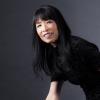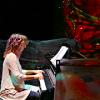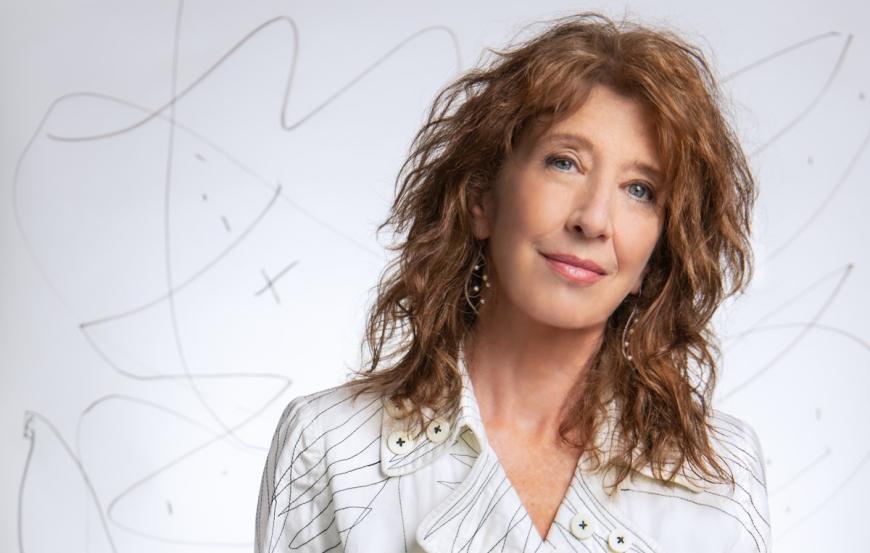
Grammy-nominated pianist Vicki Ray, who has been described as “phenomenal and fearless,” continues to be a driving force in Los Angeles’ new-music community. Her concerts often incorporate electronics, video, recitation, and improvisation, and she’s one of the founding members of Piano Spheres — the acclaimed series dedicated to exploring the less familiar realms of the solo piano repertory.
Ray will be performing in two programs in the coming weeks as part of the California Festival. On Nov. 7, she is featured with pianist Aron Kallay (the pair is known as the Ray-Kallay Duo) at 2220 Arts & Archives, and on Nov. 14, she’ll be part of a Green Umbrella program at the Los Angeles Philharmonic, “Chaparral and Interstates,” performing with fellow keyboardist Joanne Pearce Martin and two harpists in Dylan Mattingly’s Sunt Lacrimae Rerum (These are the tears of things). The latter program also features works by Reena Esmail and Samuel Adams.
Ray, who was born in Minneapolis but grew up in Great Falls, Montana, graduated from the University of Montana in Missoula before earning a master’s degree from Arizona State University. She then migrated to the Golden State, where she received her Doctor of Musical Arts at USC Thornton, and she has been on a pianistic tear ever since.
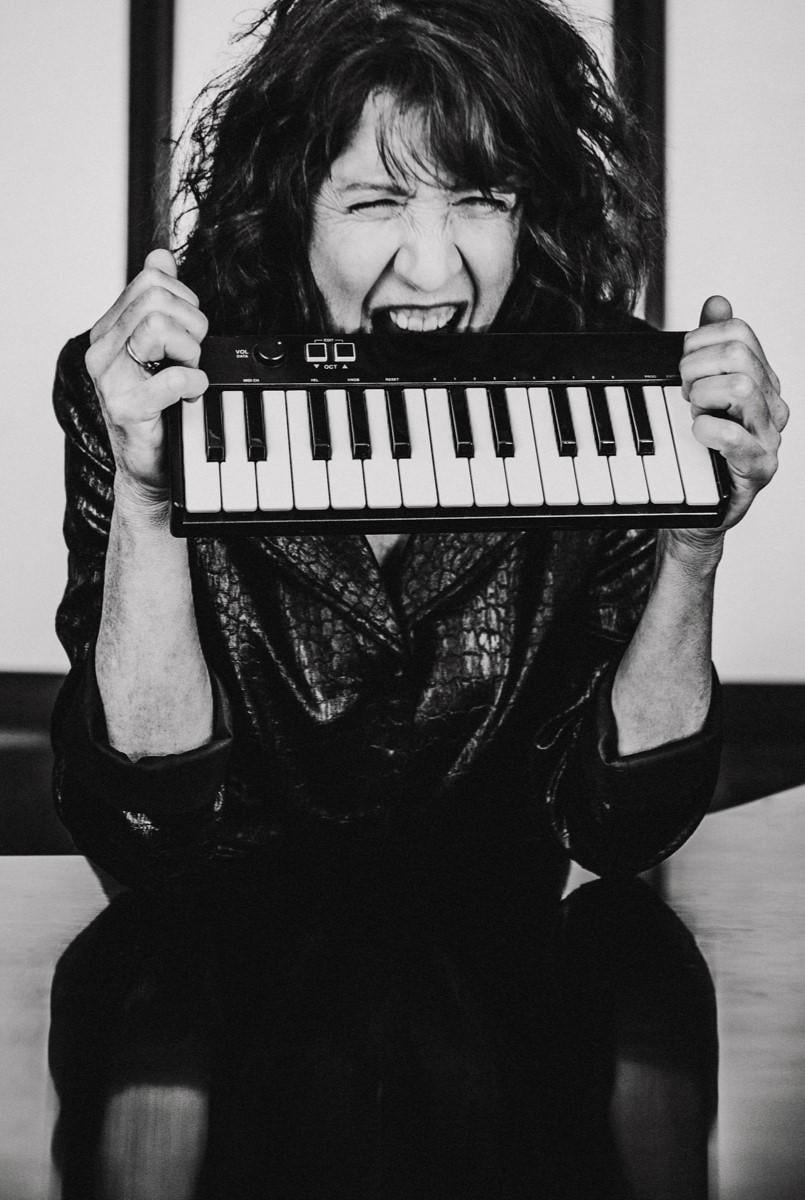
Ray’s numerous recordings are testament to her stylistic range, from the 2005 release of Steve Reich’s You Are (Variations) to the semi-improvised structures on trumpeter/composer Wadada Leo Smith’s 1999 album Light Upon Light. The pianist can also be heard on Morton Feldman’s 2011 disc Piano and String Quartet with the Eclipse Quartet and on David Rosenboom’s 2012 release Life Field, while her 2013 recording of John Cage’s The Ten Thousand Things was nominated for a Grammy.
The pianist’s work as a collaborative artist has been both varied and exciting. Ray, whose playing was hailed by the Los Angeles Times as “displaying that kind of musical thoroughness and technical panache that puts a composer’s thoughts directly before the listener,” was the keyboardist in the contemporary chamber ensembles California E.A.R. Unit and Xtet. And her contributions to concert series in the City of Angels include frequent performances for Green Umbrella and Piano Spheres, as well as with Jacaranda Music.
In addition, Ray has been heard in major solo roles with the LA Phil, the Los Angeles Master Chorale, and San Francisco Contemporary Music Players. Having served on the piano faculty at California Institute of the Arts (CalArts) since 1991 — and ultimately heading the piano department — Ray was named the first recipient of the Hal Blaine Chair in Music Performance in 2010. She retired from teaching earlier this year in order to be able to perform more.
SF Classical Voice had a chance to catch up with the industrious pianist, who spoke about her upcoming gig with Kallay, what makes for a good collaboration, and the evolution of Los Angeles’ new-music community.
When did you first realize you wanted to play contemporary music as opposed to the standard classical piano repertory?
In high school, my best friend was a composer, so I was around people who were creating music. I got serious when I was studying for my master’s degree at Arizona State. My teacher pulled me aside one day and introduced me to the conductor of a new-music ensemble [because] I needed to work on my rhythm.
The first piece was by Joan Tower, and it was a 12-against-7 rhythm. All the other kids in the ensemble were passionate about it, and I got hooked. The other [musicians] and the conductor, who was a young composer himself, we would meet at 6 a.m. on a Sunday morning, and there was an incredible esprit de corps. We got to work with living composers, and I’d never done that before.
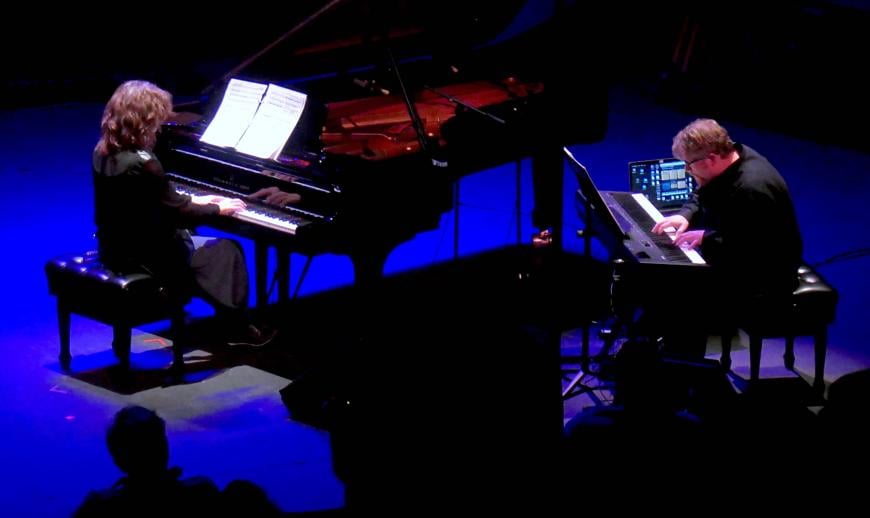
Let’s talk about your Nov. 7 program with Aron Kallay. Since it’s part of the California Festival, you’re obviously showcasing California composers. How did you two decide on the seven composers and the various works you would be playing?
We picked composers who, at some point, spent some time here and for whom California influenced their works. Before every piece on our concert, there’s a little voice recording of the composer talking about the piece, what California meant to them when they were here, and how it influenced their thinking. John Luther Adams [for example], people associate him with Alaska, but he was at CalArts. He’ll talk about that, which adds an extra layer.
Putting together a program is like putting together a menu for a meal. We had to whittle it down to seven because we’ve done so much by California composers in the last 15 years. And a few we just recorded: Starfields by Michael Byron, Fit by Sean Friar, and Titanium by João Pedro Oliveira. Those were for sure. There was also a beautiful piece, Hush by Nina Shekhar, [that] we had just played in New York, and we knew we wanted to play that again here.
We’re playing pieces for two keyboards and on a regular acoustic grand for four hands. We’re also playing a piece we learned a few years ago by Rand Steiger. He was [founding artistic director and] an original member of E.A.R. Unit. It’s called Post-Truth Lament, and he talks about the diminished respect for truth. It was born during the Trump [administration] and is very timely.
And you’re each performing a solo?
Yes. Aron is playing a work from a group of pieces by Veronika Krausas, UN-intermezzi, and I’m going to play a piece of mine, Treize. It’s like a varied menu with a lot of different sound worlds.
How long have you been working with Kallay, and what makes you two click?
We met in 2009, and first and foremost, there’s a great deal of respect going both ways. We have fun. We have no problems suggesting things to each other. We share a common vision about getting the audience excited about the music and finding the language to best communicate that as a team.
We both work kind of the same way — with intense bursts of rehearsals. But it’s mostly about really having a good time together and making it fun. There’s an old Zen writer, Paul Reps. He wrote a book of Zen parables that he gathered together, Zen Flesh, Zen Bones, and I’ve been reading him since I was a teenager. He had a little motto: “If it’s not fun, better left undone.” That’s not to say just do what you want.
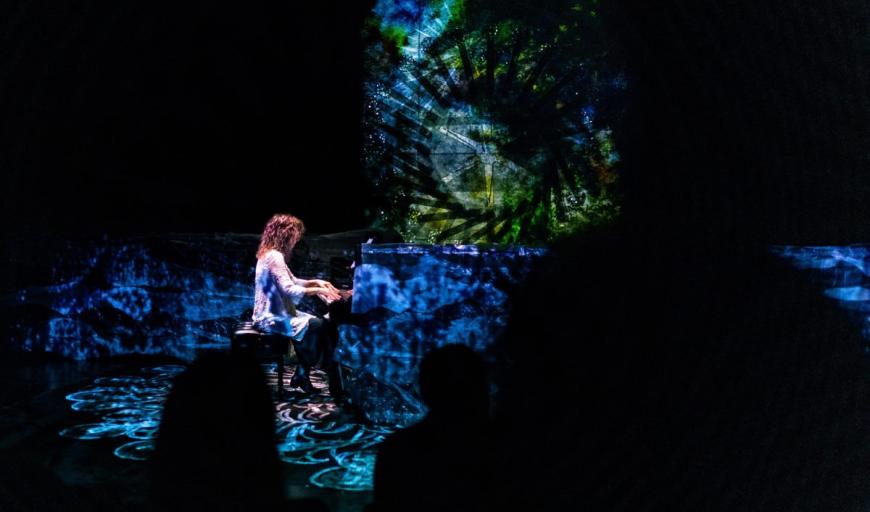
Piano Spheres was founded in 1994 by pianist Leonard Stein, and you were there at the beginning. How have you seen it evolve since its inception?
I am an original member. We have grown so much. In the early days we were a few pianists licking a lot of stamps and stuffing envelopes ourselves. We were completely self-produced and performed in a neighborhood church in Pasadena. We expanded and became a nonprofit. We got a board.
At a certain point, core members decided we wanted to invite in younger players, [which became] the Emerging Artists series. They shared our mission, and now some of them are core artists — [piano duo] HOCKET, Aron — and then we further expanded. We now have the Leonard Stein Artist Residency for historically underrepresented groups, and we have a jazz series in the summer. I wish Leonard could have seen all this. He would have been pleased.
You must get so many offers to perform. For example, you recently bookended a program for the Martha Graham Dance Company at The Soraya. You opened the concert performing Mario Tarenghi’s score for Ted Shawn’s Serenata Morisca and then closed the evening playing Scott Joplin’s “Maple Leaf Rag.” How do you decide what gigs to take?
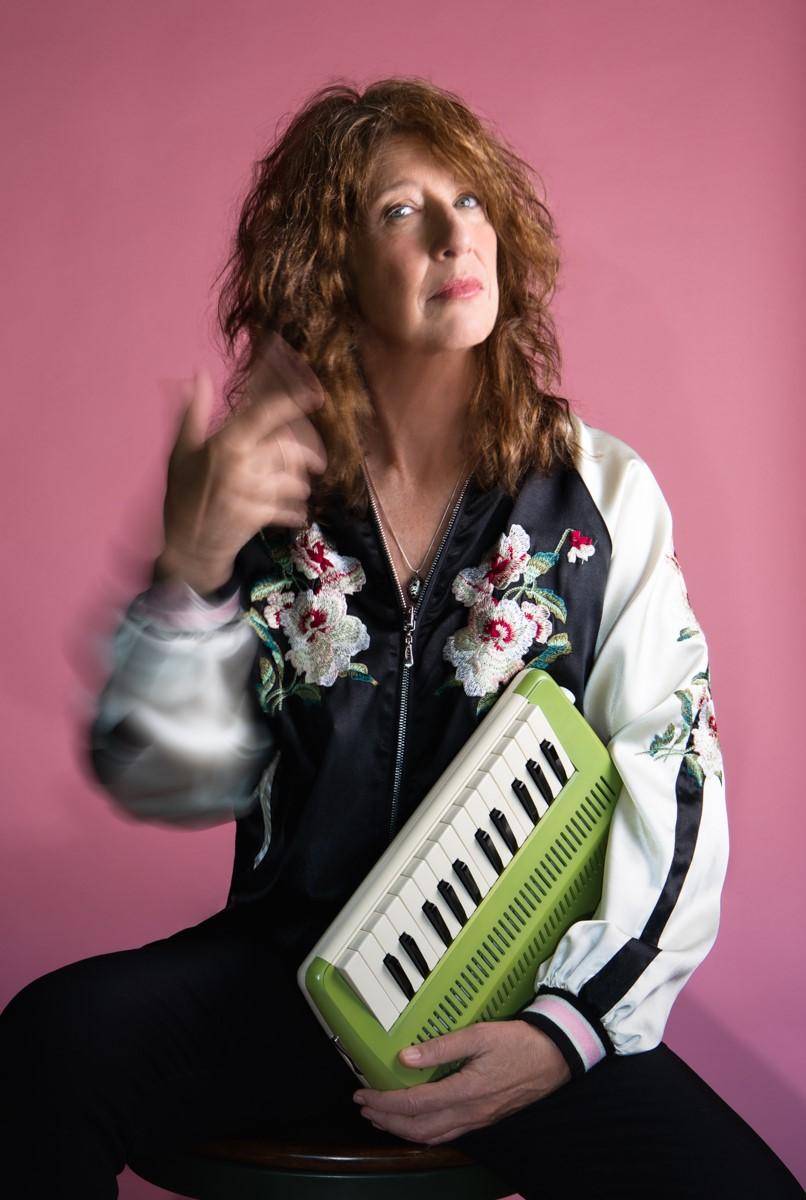
I’ve been lucky. But the Graham Company picked that repertory. I love working with dancers, though. It’s so incredible to see the music physicalized while you’re playing it. I feed off of their energy. They were such lovely people, and that was such a high.
But over the years, I’m just interested in doing a lot of different things and things that take me out of my comfort zone. New music has always done that. I want to be involved with projects that stretch me and try something new. When the Graham [evening] came along, I said, “Yeah!” When I was growing up in Montana, my parents needed to find a new teacher for me, and they found a barroom pianist. He taught me stride piano. I was 13, but fast-forward a few decades and now I’m doing Scott Joplin with Graham.
Seriously, is there anything you can’t play?
There’s tons of music I can’t play. I’m not sure that some of the [György] Ligeti Etudes are within my reach and some of the new complexities in [contemporary] music, but I’d certainly be willing to try. I would love to play [J.S. Bach’s] Goldberg Variations, and now, I’m learning the [Maurice] Ravel Piano Trio, which I’ve wanted to learn my whole life. It’s such a joy to come back into the world of harmony, the early 20th century, and swim around in that gorgeousness.
Do you see more young people at your concerts these days, and what do you think of the state of contemporary music now?
I would still like to see more young people at concerts. With classical music, audiences tend to be on the older side. It just depends. Look at Monday Evening Concerts, [directed by] Jonathan Hepfer. He and [also] the folks from [contemporary ensemble] Wild Up have found ways to attract diverse audiences that cover the gamut age-wise. It depends on the repertory, the venue, and outreach. It’s a vibrant time.
I don’t know if this is true, but some of my friends think there’s more new music going on in L.A. than in New York. When Esa-Pekka Salonen was at the helm [of the LA Phil], so much was getting done. It came from the top and permeated our culture. But what we need are venues, and we always need more funding, even though there are some really wonderful loyal supporters.
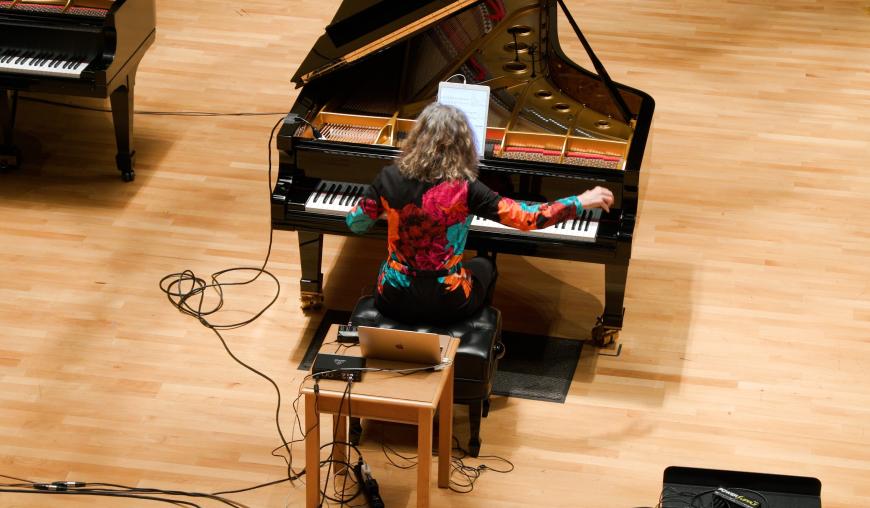
What advice do you have for aspiring professional pianists or composers?
The first thing that comes to mind — and it’s something I wish someone had told me — is don’t be afraid to have all sides of your musical personality come into play in your artistry. In other words, if you’re a classical pianist but also love hip-hop, or you sing or love country and western music, don’t feel you can’t integrate those things into your artistry.
A performer or composer is much more vibrant [than that]. When I got started, it was elitist and exclusive to think [that a musician could only do one thing], so it’s great to see that melting away. I encourage young pianists to embrace all sides of their musical personality and integrate these into their playing.


